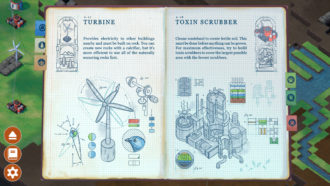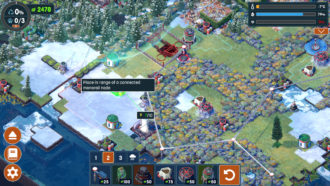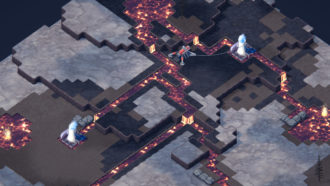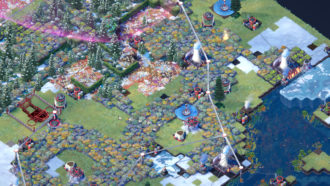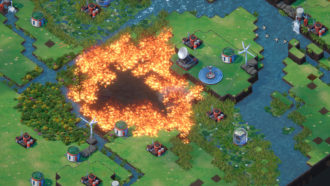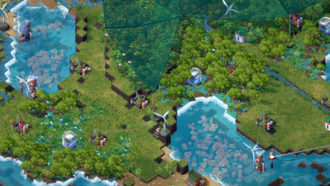Platform:
PC
Released:
March 28, 2023
Publisher:
Devolver Digital
Developer:
Free Lives Games
I love resource management games. Whether they be city builders, farming sims, or even a side mechanic in a game that largely focuses on other gameplay styles. Terra Nil immediately stands out as something completely different from its contemporaries in the genre as the game operates in entirely the opposite manner. The key thesis of Terra Nil is the return of nature, instead of the destruction of it in the name of progress. It’s an idea that is as novel in concept as it is brilliant in execution.
Terra Nil was created by Free Lives, an independent developer based in South Africa and was created as an attempt to hold a mirror to the city-building genre. It’s the inverse of the standard; it’s a game that isn’t designed to be infinitely replayable but is instead meant to be meditative as well as thought-provoking. It succeeds brilliantly in both respects.
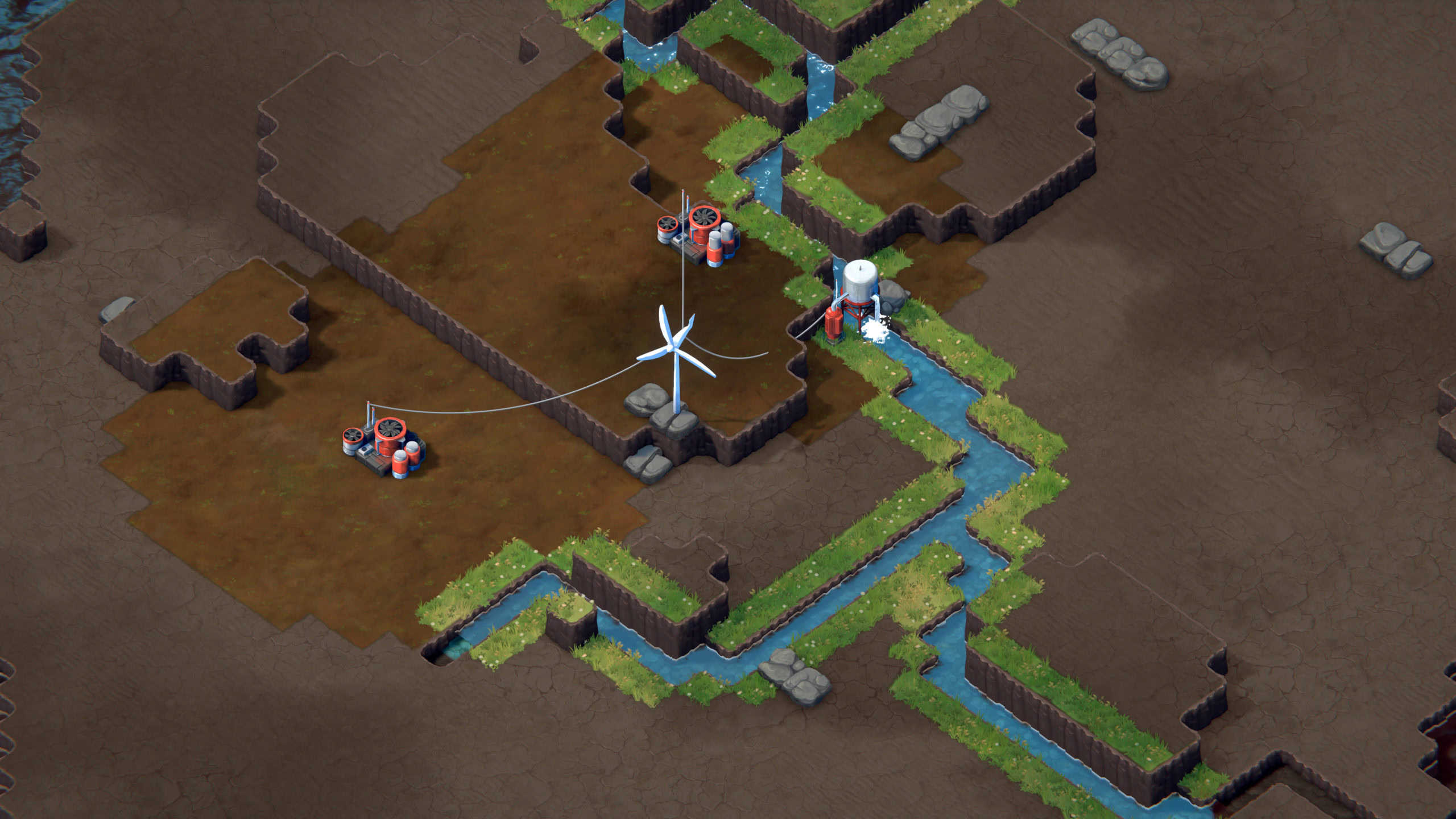
Each region in Terra Nil begins as little more than a grey-coloured wasteland where both water and earth are completely incapable of sustaining life. Your goal is to create the perfect environment for the region, and then encourage animals to return to the area. A simple premise, but so satisfying in practice! Using various machines, you can purify the soil, grow grass, clean water, and then bring the land back to life with gorgeous flora and fauna. The gameplay loop is highly meditative with each placed object giving you satisfying visual and audio feedback, making it so easy to get lost in a rhythm as you watch the world turn from grey to green.
That isn’t to say the game lacks the potential for difficulty though. This is where the management systems come in, as each building requires power and must be connected to a windmill or other suitable power source. Finding the perfect way to rebuild the landscape with the resources you have available is incredibly satisfying and the more you play, the more new buildings you unlock, allowing you to find new ways to restore the ecosystem even more effectively. After moving through each stage, I decided to go back and try them again with my new knowledge, finding them even more fun now that I had a keen understanding of how each building works.
The game does an outstanding job of introducing players to new devices and methods of restoring the environment so it never feels confusing, but it does take a little bit to understand how to use each building to its fullest. Far from being a problem, this just means you can always go back and do levels again but better, something that is incredibly rewarding. Terra Nil also offers three different difficulties which affect how much it costs to place objects and what is required in order to grow the correct flora for the area. With that being said, the difficulty is clearly not the game’s focus; it’s no Frostpunk.
Taking back nature from the ruin of industrialism is captivating and moving on its own, but the final step of restoration is the one that I felt most viscerally. Removing any trace that you were ever even there, all of your machines are recycled and used to build an airship that you can then use to leave the area to thrive without you. Watching your haphazardly-placed buildings disappear with a delightful pop to reveal the natural beauty of the region you have created is endlessly rewarding, and the gradual introduction of weather as you improve the climate means that rain or snow can tidy up any spots you’ve missed. It’s the ultimate proof that the land can sustain itself after you leave.
“It’s an idea that is as novel in concept as it is brilliant in execution.”
Terra Nil spans four different regions, each with their own challenges and different machines required in order to restore them. Moving from River Valley to Desolate Island is a huge leap, with so much of the area being taken up by the ocean and a completely different climate required in order to facilitate wildlife. While the gameplay remains consistently zen, each region is demonstrably different in ways that keep you engaged, with new biomes to establish with their own requirements and buildings that have to be used in new and interesting ways.
Visually, Terra Nil is stunning. It does so much with a fairly simple art style, showing the contrast between the harsh wasteland you begin with and the lush greenery of the final result in brilliant clarity. Each biome is vastly different, but when you grow them right next to each other, they feel perfectly natural. No matter how you choose to regrow the world, your final product will always be beautiful. The animations are a visual feast with trees popping up from the ground and fresh grass tiles jumping for joy when they are watered for the first time.
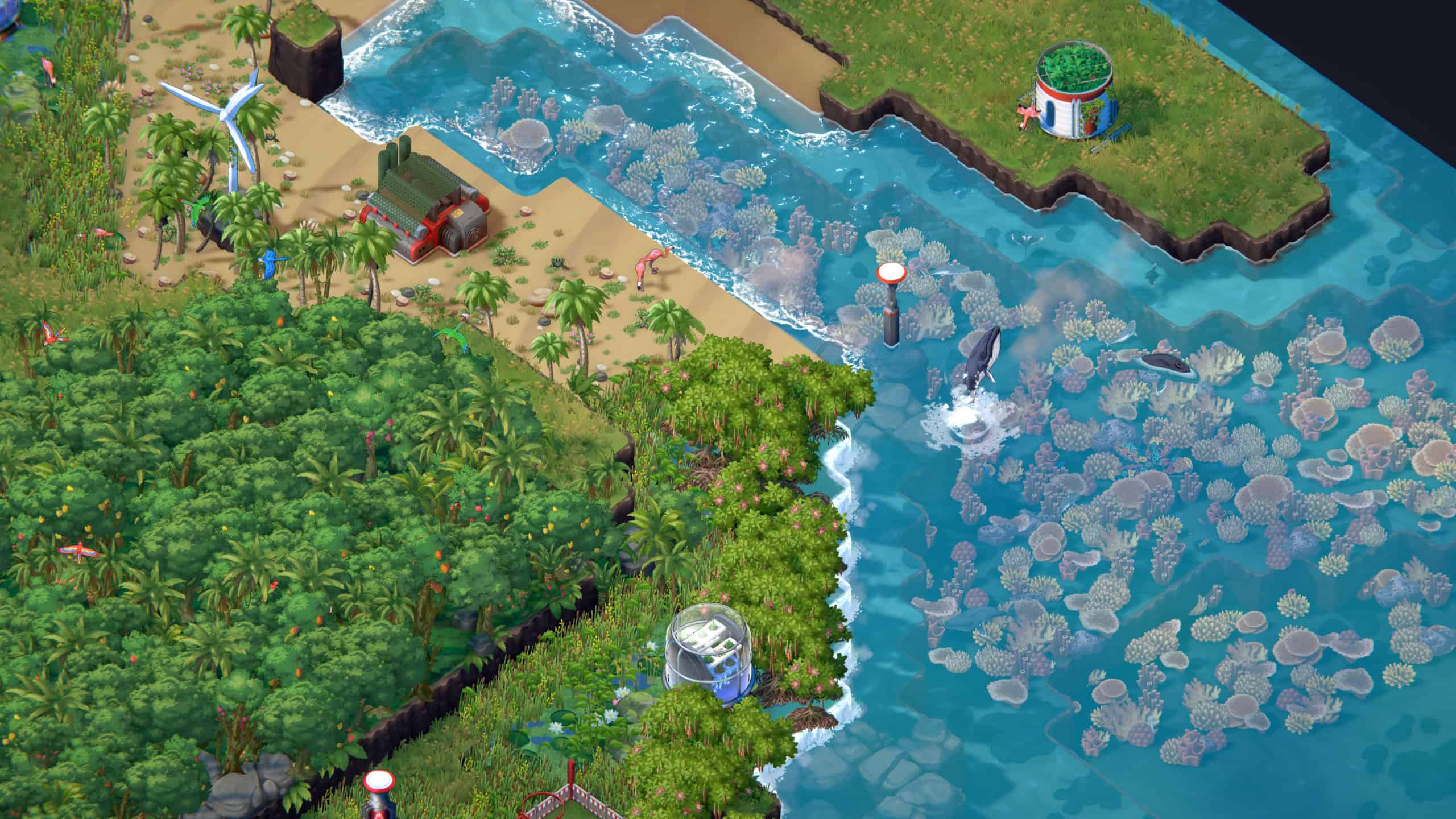
The soundtrack of Terra Nil is also brilliant in its subtlety. In each new region, the game starts off entirely silent, and then a small beat of music plays with each new building placed. Then, as you begin to heal the wasteland, the soundtrack slowly builds and builds as the expanse of grass covers more and more of the land. It feels like the music is a part of the environment itself, that it is blowing on the wind, through the trees, and only grows stronger as the world comes back to life.
The sound effects in the game are also perfect. The satisfying whoosh of an irrigator spreading its water or the gratifying tick tick tick of a set of tiles growing into a vibrant forest is nearly addictive. One of my favourite audio moments is the solum music that follows the necessary burning of grassland in order to build a forest in its ashes. Even though the moment is only temporary, it still feels tragic as you watch the flowers and grass burn. Every part of the sound design in Terra Nil is outstandingly implemented and powerful.
“Terra Nil had me in tears by the end of the main campaign.”
The culmination of everything you have learned in the game takes you to the final level, the Flooded City. Once a sprawling metropolis, it’s now a shell of its former self, swallowed up by the irradiated ocean. You have to actually dredge the earth under the water in order to build up landmasses that plants can take over, which took me by surprise. Especially beautiful are the bamboo forests that can grow within the shell of skyscrapers, and the sunflowers that can be grown to absorb any radiation from the air. Watching a beautiful landscape flourish, thick green ivy growing over the sad dead bricks of collapsed buildings, and seeing animals move back to the region is beautiful beyond words.
For a game with no dialogue or characters, Terra Nil manages to be an incredibly emotional, cathartic experience. While it makes sense that humans have to leave for the environment to continue flourishing, there is still a bittersweetness to leaving the world behind. Something about working to create a beautiful Earth, but not for yourself, is incredibly selfless and moving. I may just be a big sap, but the message of Terra Nil had me in tears by the end of the main campaign. The game only lasts about 5 hours, but there are some additional stages available after the credits that provide some extra challenge to the familiar regions. While I would love more to play, the story of the game wraps up very quickly and that works ultimately in the game’s favour. The world of Terra Nil, just like our own world, is not limitless.
10
Masterpiece
Positive:
- A super satisfying gameplay loop
- Beautiful theme is matched by gameplay and harmonious design
- Outstanding wordless storytelling
- Subtle but moving soundtrack and fauntless sound design
- Gorgeous art and animation that blooms to life spectacularly
Negative:
- Won't be a challenge for management sim veterans
Terra Nil is a masterclass in everything that it attempts to be. A resource management sim that can be as difficult or relaxing as you want, that successfully provides an alternative to classic city-building games by completely flipping the core pillars of the genre on its head, and showing that a game about fostering nature can be just as engaging as one about destroying it. The game does an amazing job of evoking emotion in the player with just its environment alone and even allows you a moment to relish in the majesty of each region you have restored before heading on to the next. Terra Nil wants you to find love and beauty in nature, even if you have to leave it behind. Endlessly satisfying and elegant, any fans of city builders should give this outstanding take on the genre a try.
